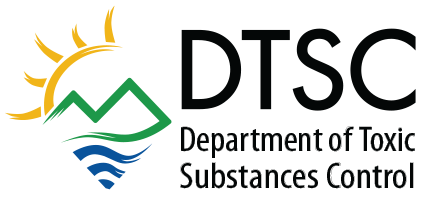Sea Level Rise
Background
Climate change is causing Sea Level Rise (SLR) to negatively impact communities all along California’s coastline. SLR is an increase in the water level of the Earth’s oceans resulting from the thermal expansion of ocean water and melting of land ice. At DTSC we’re focused on mitigating the impact Sea Level Rise can have on contaminated properties we’re tasked with cleaning up or overseeing.
Without proper protections, SLR may adversely affect public health and degrade the environment because it can significantly alter hydraulic, geologic, hydrogeologic, and chemical conditions of contaminated sites, and increase threat of release of hazardous contaminants in surface water, ground water, air, soil, and sediment. This protection is at the core of DTSC’s mission to protect California’s people, communities, and environment from toxic substances, to enhance economic vitality by restoring contaminated land, and to compel manufacturers to make safer consumer products.
While DTSC has the expertise in the investigation and cleanup of contaminated sites, DTSC relies on other experts for the most up-to-date science on sea level rise. DTSC is collaborating with other state agencies to identify, assess and to the extent feasible, mitigate impacts of SLR. The Ocean Protection Council (OPC) revised the State Agency Sea-Level Rise Action Plan for California (California SLR Action Plan) In 2024. This plan established goals including:
- preparation and planning for SLR across the entire California coastline,
- SLR adaptation planning with specific, actionable pathways to resiliency,
- use of best available science including the 2024 State of California Sea Level Rise Guidance (California Sea Level Rise Guidance),
- prioritization of equity in SLR adaptation planning and projects,
- prioritization of nature-based solutions as feasible, and
- protection and preservation of coastal habitats.
Past Public Information and Feedback Sessions
March 30, 2023
DTSC hosted the first remote Public Information & Feedback Session to provide information on the DTSC Sea Level Rise Guidance for Project Managers.
Meeting Materials
• Meeting Presentation [English] [Español]
• Meeting Video
September 12, 2023
DTSC hosted the second remote Public Information & Feedback Session to provide information on the DTSC Sea Level Rise Guidance for Project Managers.
Meeting Materials
- Meeting Presentation [English] [Español]
- Meeting Video
DTSC Guidance
DTSC has developed guidance to support consistency in addressing sea level rise across all phases of the DTSC cleanup project life cycle. We’re publishing this Guidance so that those interested can become familiar and engage with us as we continue considering SLR in our cleanup remedies at contaminated sites. The Guidance ensures that DTSC Project Managers evaluate remedies at contaminated sites using a consistent process, so that remedies are resilient both now and into the future. DTSC requires Responsible Parties to account for SLR by assessing the vulnerability of sites to SLR. If through the assessment potential issues with remedy resilience are identified, RPs will be required to develop and implement adaptation plans. The Guidance provides information on sea level rise and related phenomena which can result in damage to remedies and mandates that DTSC project managers consider SLR in the remediation process consistent with the California SLR Action Plan.
DTSC requires a SLR vulnerability assessment (SLRVA) be conducted to specifically evaluate the proposed or existing remedy at the site to future SLR impacts.
The Guidance is currently being utilized by DTSC project managers and will be updated as needed. Planning for SLR is an everchanging process because scientific discoveries and change in the multitude of factors that influence SLR projections can evolve. We expect to learn through the implementation and will revise as necessary based on our experience or on public input.
DTSC shared our Guidance with the public from February 2023 through October 2023. We received over 400 comments from individual community members, action groups, academia, local municipal entities, as well as state government representatives. Additionally, during our revision period, the OPC updated their California SLR Action Plan and 2024 California Sea Level Rise Guidance. The comments received were grouped into 21 topics and responses to those topical groups has also been issued. Changes in the OPC documents also facilitated changes in the DTSC Guidance.
- October 2024 – Sea Level Rise Guidance to DTSC Project Managers for Cleanup Activities
- October 2024 – Response to Public Comments on the February 2023, Draft Sea Level Rise Guidance to DTSC Project Managers for Cleanup Activities
- Public Announcement: English – Spanish
DTSC SLR Web Application
DTSC has inventoried its EnviroStor database of sites to assess the number of current projects that could be subject to a SLRVA. While every project could be subject to an assessment, resources will be focused on those projects which lie within inundation areas or in areas where groundwater rise could affect known contamination.
Sea Level Rise Links
Site Mitigation & Restoration Program Links
- Brownfields
- Cleanup in Vulnerable Communities Initiative (CVCI)
- EnviroStor
- Exide
- Human and Ecological Risk Office
- Lead-Acid Battery Recycling Facility Investigation and Cleanup Program
- Loans & Grants
- Land Use Restriction Sites
- Santa Susana Field Laboratory
- School Sites
- Sea Level Rise
- State Superfund Program
- Strategic Plan and Program Enhancement Work Plan
- Vapor Intrusion
- Contact Information
Site Mitigation & Restoration Program Related Links

Primary Contact
Contact DTSC by email at DTSC_SeaLevelRise@dtsc.ca.gov or by clicking the “Contact DTSC” button below.
Connect / Contact Us
Office Locations / Map
Sign up for an E-List
Regulatory Assistance Officers
Statewide Campaigns/Alerts
Report an Environmental Concern
Amber Alert
California Grants Portal
Register to Vote
Save Our Water.com




 Katherine M. Butler, MPH
Katherine M. Butler, MPH